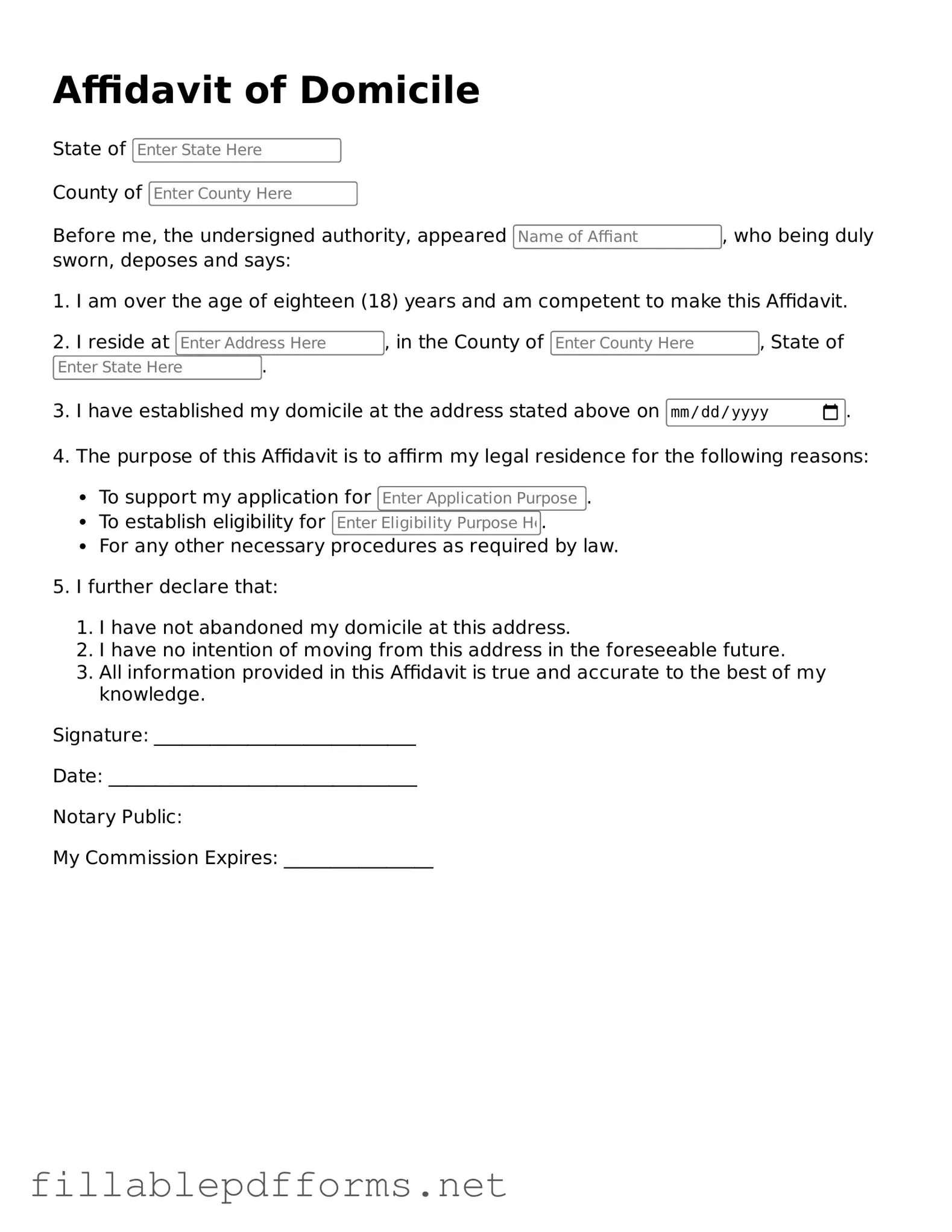Blank Affidavit of Domicile Template
The Affidavit of Domicile is a legal document that serves to confirm an individual's primary residence. This form is often used in estate planning and probate proceedings to establish where a person lived at the time of their death. Understanding its purpose and requirements can help streamline various legal processes related to property and inheritance.
Launch Editor Here
